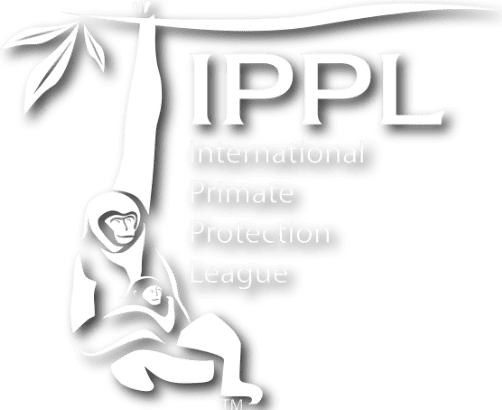A monkey castle in Morocco

“How do you defend a once-widespread primate in Morocco from further decline?” After seeing the degraded state of the Barbary macaque monkeys living by the roadside near the town of Azrou, this is what our roving zoologist/photojournalist Keri Cairns wanted to know.
Maybe build the monkeys a castle?
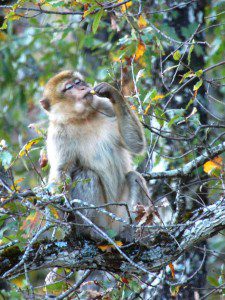
A wild Barbary macaque monkey forages in the cork forests of Bouhachem, in Morocco.
We had sent Keri on an excursion earlier this year to document the current status of the Barbary macaques in their native land. These hardy and adaptable animals can flourish in a variety of habitats, but proximity to humans usually spells disaster for the health and well-being of these unique monkeys.
“My next stop after Azrou was yet another mountain range: the Rif Mountains in northern Morocco,” Keri told us. There he met with Ahmed El Harrad, the deputy director of Barbary Macaque Conservation in the Rif (BMCRif), which is one of two Moroccan groups (along with the Moroccan Primate Conservation Foundation) that IPPL is helping to support.

The “Monkey Bus:” the trusty Land Rover of the Barbary Macaque Conservation in the Rif.
“We spent the first few days travelling around the cork oak forests of Bouhachem in the ‘Monkey Bus’, BMCRif’s essential Land Rover. BMCRif has been carrying out research into the macaque populations of Bouhachem for almost 10 years now.
“On my visit, I was treated to Ahmed’s extensive knowledge of the macaque groups that live in these forests. I was lucky to get a glimpse of most of the groups, although they would soon scamper off once they had seen us. It was nice to finally meet some truly wild macaques.
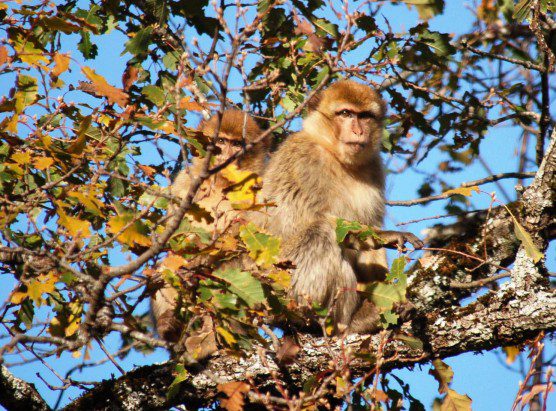
Truly wild Barbary monkeys in Bouhachem, in the Rif mountains of northern Morocco, play important roles in the forest and pasture ecosystems there.
“I was amazed to learn that some of the groups consisted of up to 75 monkeys. I also discovered that each group maintains its own bit of pasture—a patch of open land on the border of its territory. The monkeys visit these pastures most evenings to graze before retiring to their sleeping trees. So not only do the macaques help disperse the seeds of the forest trees, but they also preserve these pasturelands, to the benefit of other animals and plants.”
This role of the monkeys in maintaining local ecosystems is what BMCRif has been working hard to explain to local communities. It seems to be working.
The “Shepherd Outreach Programme” is one successful example. Prior to the founding of BMCRif in 2004, local shepherds and goatherds would often chase or set their dogs on macaques they encountered. “By working with the shepherds and winning over their trust, BMCRif has discovered a valuable asset to macaque conservation in the region,” Keri told us. “The shepherds are in the forest every day, so they know the territories of the groups. Also, if someone enters the forest to try and take a macaque, the shepherds will immediately contact Ahmed.”
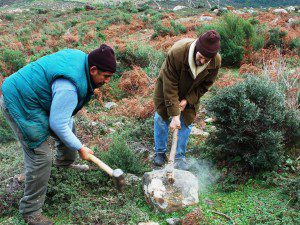
Ahmed El Harrad, deputy director of BMCRif (left), and a helper work on “El Castillo,” a new education center dedicated to the preservation of Barbary macaques in Morocco.
Later, Ahmed took Keri to see the construction site for BMCRif’s education center. Not only will it be a resource for schoolchildren, adults in the local communities will be able to learn practical skills like beekeeping and animal husbandry while being exposed to positive conservation messages.
It will also be a perfect base for behavioral and ecological research on the macaques, situated in the center of numerous wild macaque troops.
“The education center is going to become the focal point of ‘El Castillo,’ or ‘The Castle,’ as Ahmed calls it,” Keri said. “It’s clear that Ahmed is passionate, not just about the monkeys, but about the forests and the communities that live there. From El Castillo, BMCRif will be well-placed to be able to defend the Barbary macaques of the Rif Mountains.”
